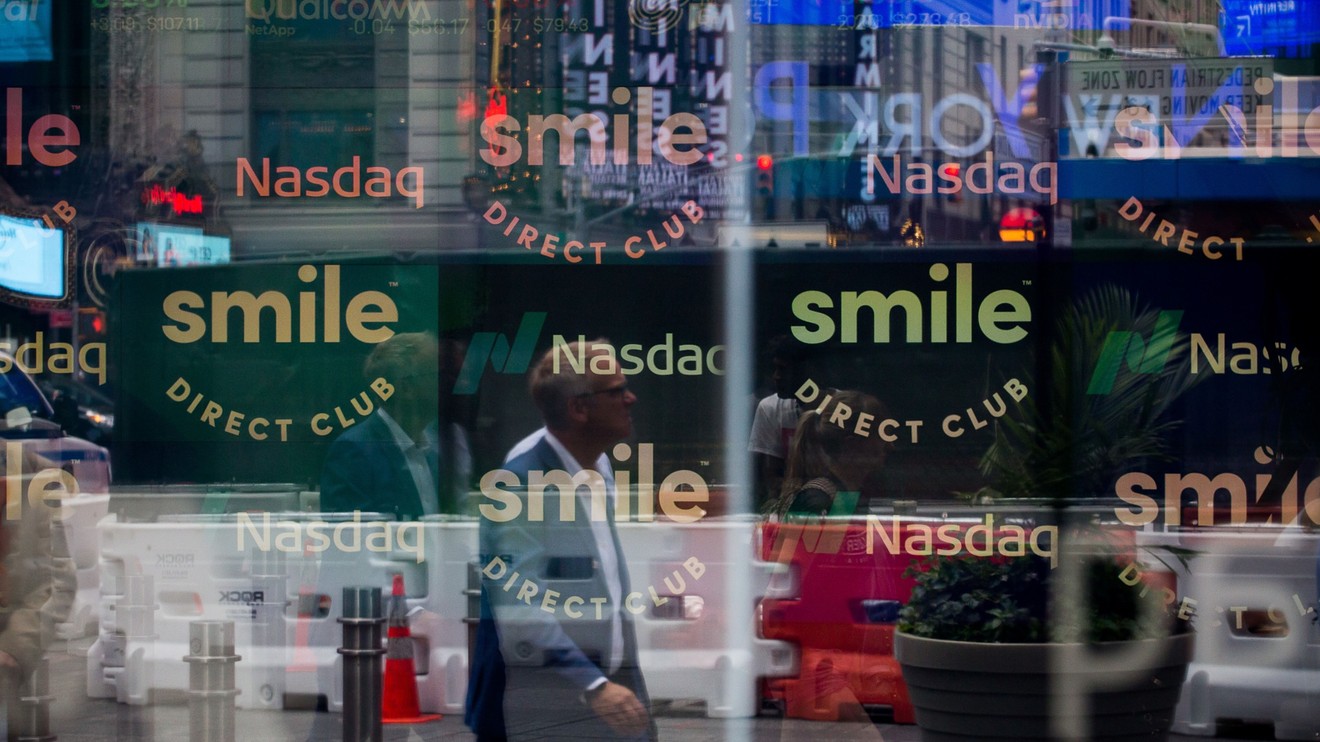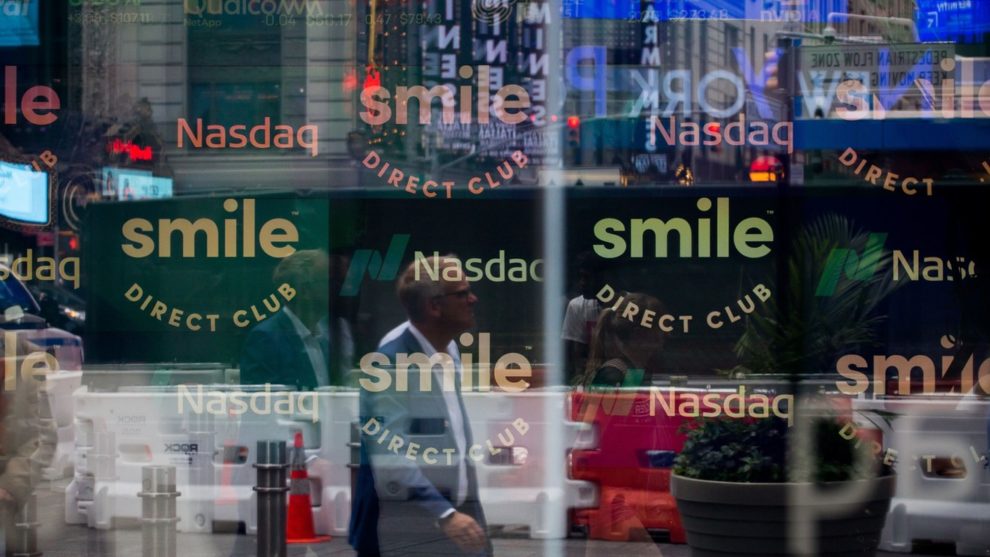
Executives at the controversial SmileDirectClub Inc. lowered the outlook for the company’s future revenue-growth rate Tuesday, letting even more air out of the company’s once bubble-like stock price.
Earlier on Tuesday, David Katzman, chief executive of the lower-cost, mail-order teeth-aligner company said in SmileDirectClub’s SDC, -4.06% fourth-quarter earnings statement that he had made a decision to “control the company’s growth rate,” in order to provide the best consumer experience and to become profitable, on an adjusted basis, in 2020. For the fourth quarter, SDC’s results came in slightly below expectations, and combined with its outlook, fueled a 20% plunge in its shares in after-hours trading.
Inefficiencies in SDC’s manufacturing facilities, aggressive hiring plans and inefficient back-office processes led to higher-than-expected costs, the company said, and fourth-quarter shipping delays had an impact on the quarter, leading to the decision to “control growth.”
During the conference call with analysts, executives further clarified that statement, noting that SmileDirectClub’s revenue, post-2020, would grow at an average rate of 20% to 30% a year for the next five years. Compared with revenue of $750 million and growth of 77% in 2019, that statement was a major disappointment for analysts , most of whom started SDC with a buy rating after its disastrous IPO in September, which ranked as the worst IPO in two decades. Some have been expecting growth rates of 40% plus in the next few years.
“With 40%+ estimated annualized revenue growth through 2023, SDC has a top quartile revenue growth profile in a sector that places a high value on growth,” wrote Citi analyst Stephanie Demko, in October, in a note initiating a buy rating. Jeffries & Co. analyst Brandon Couillard has been forecasting “rapid and sustainable growth” of about 50% compounded annual growth rate through 2021.
Before the company’s earnings call, according to FactSet, the consensus on Wall Street was for SmileDirectClub revenue to grow 37% in 2021, 30% in 2022 and 49% in 2023.
A few analysts asked if the problems some consumers have experienced using SmileDirectClub aligners — issues raised after its IPO in a report by short-seller Hindenburg Research and highlighted in some recent press reports — were having an impact on revenue growth and consumer adoption.
“The controlled growth was really a reflection of what you saw in the fourth quarter and some of the operational difficulties we had in manufacturing,” Katzman said. “It was not related to clinical outcomes. Our clinical outcomes are improving all the time.”
SmileDirectClub executives are also not backing down from their combative, Uber-like stance in dealing with regulators and critics of their business model, in which the company claims it is not practicing dentistry. SDC says all its customers are assigned to practicing dentists who create a custom teeth-straightening plan and remotely monitor a patient’s progress with the aligners. The aligners are manufactured based on 3D images scanned of a consumer’s mouth taken at a SmileShop, or by impressions the consumer makes at home.
SDC also said that its legal and lobbying costs again climbed 18% in the quarter. The company is involved in numerous lawsuits throughout the U.S., some of which it has successfully moved to arbitration. Another analyst asked about the impact of an ongoing case in California, in which the state’s Dental Board has an investigation into Jeffrey Sulitzer, the company’s chief clinical officer. SDC has also sued every member of the California Dental Board and one of its investigators for harassment, intimidation and anti-competitive behavior.
Katzman said the company has not lost a single dentist in its network of 250 dentists nationwide. He also said in the next few weeks and months, SDC plans to expose “those who are using their platform for anti-competitive behavior.”
The combative SmileDirectClub is clearly planning for more assaults on what it calls “Big Dental,” the entrenched dental and orthodontic industry that has sounded warnings to consumers about the usage of aligners without in-person supervision of a licensed dentist. But whatever side of the fence an investor may be on in the company’s battle, it’s pretty clear that the period of big revenue growth for SmileDirectClub is over, for now at least, and controversies will continue to taint this stock.
div > iframe { width: 100% !important; min-width: 300px; max-width: 800px; } ]]>









